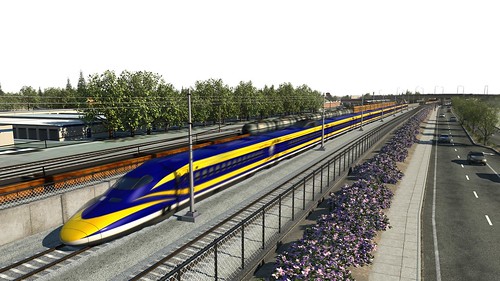Can high GHG offsets make high-speed rail worth it?
I subscribe to a daily listserv from The California Business Climate Network which provides a daily round up of the most important stories that affect California and climate related issues. It's sort of like the environmental version of my favorite news daily, The Skimm.
Last Wednesday the list serve featured a story from Environment and Energy Daily covering the state's projection that the high-speed rail line will reduce greenhouse gas emissions in the first year of full operation. According to the article the line will displace carbon emissions equal to 31,000 vehicles in the first year.
Upon reading that I thought, "that's great!" but I also commented to a coworkers that I have the equivalent to cars, equivalent to trees analogies. As I've shared before I love me some hard numbers! So, for those fellow data geeks here you go:
Last Wednesday the list serve featured a story from Environment and Energy Daily covering the state's projection that the high-speed rail line will reduce greenhouse gas emissions in the first year of full operation. According to the article the line will displace carbon emissions equal to 31,000 vehicles in the first year.
Upon reading that I thought, "that's great!" but I also commented to a coworkers that I have the equivalent to cars, equivalent to trees analogies. As I've shared before I love me some hard numbers! So, for those fellow data geeks here you go:
- 4.5-8.4 million metric tons of CO2 equivalent divert by 2030*
- 27.1-44.9 million tons of displaced carbon emissions by 2050*
Pretty impressive numbers. But, because someone always thinks to ask, what about the emissions that will be generated constructing this line? The plan is that this line will eventually run 800 miles from Sacramento to San Diego, and according a report ordered by state lawmakers the first 29 mile leg is estimated to generate 30,107 metric tons of CO2e. Now, I could call our newest team member, Sarah into the office to work this out for me (she does hold a MS in Applied Mathematics after all) but I think I can run the rough numbers on my own, so lets give this a try, shall we? For ease of my math I'm rounding and saying every mile built produces 1,000 tons CO2e in the process. Given that,
Well then. Even if construction produces double the estimated 800,000 C02e there's still a huge rate of diversion of GHG emissions!
There's a lot of controversy over high-speed rail. Especially in our region, but on the value of GHG emission reduction alone it looks like a pretty good thing. Additionally the state intends to buy renewable power to run the line with an assumed mix of
- 20% solar
- 40% wind
- 35% geothermal
- 5% biogas converted
DISCLAIMER: The SJVCEO has publicly supported high-speed rail in California since 2008.


